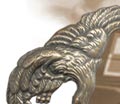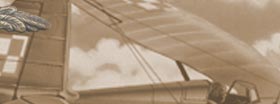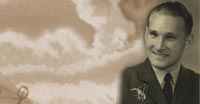The Forgotten Few: The Polish Air Force in the Second World War
By Adam Zamoyski, Barnsley. Pen & Sword Aviation.
ISBN 978 184884 196 3
Although first published in 1995, Adam Zamoyski has crafted a readable chronology of the Polish Air Force (PAF) and its war, which will appeal to both generalist and specialist reader alike. The importance of the book lies in the contextualizing of the Polish contribution across the whole air force services. The book has been released at a time when Britain has begun to re-appreciate the Polish contribution. Far from being 'forgotten' new memorials have been dedicated to the PAF's contribution and Internet groups have kept the history of the PAF very much 'alive and accessible'.
The book chronicles the war from a well-balanced Polish viewpoint taking into account the Polish culture: a dash of the 'gallant and the brave' together with the political rifts within the exiled government that had impacting upon Polish strategic and political goals. Zamoyski has resisted over indulging in 'blame' for the Polish failure and the consequences of the Poles betrayal at Yalta by the three great leaders (Stalin, Roosevelt and Churchill) or their ill-fated quarrel with Stalin over the Curzon Line.
The structure of the book enables all branches of the PAF to have sufficient detailed coverage within the chronicle of the war that also includes the disastrous secondment to the French between 1939 and December 1941 - also largely 'forgotten'. Perhaps what is missing maybe a more detail account into the journey escaping Poles endured to fight and defend Britain. While pilots were at a premium in 'value' they were swiftly removed from Romanian internment camps prior to the German invasion of the Balkans and southern central Europe thereby cutting off escape routes. Others who had survived the Soviet Gulags witnessed the inhumane treatment of those who had perished in appalling conditions. Those who survived re-enlisted and made their way to the Middle East via Persia and eventually Britain. Britain gained an experienced battle-hardened air force, army and not forgetting a small but effective navy. In true 'British style' military planners under utilized the potential of the Polish contribution. It was not until the PAF fighter squadrons 'kill rate' in the Battle of Britain together with the skills and courage of the bomber squadrons or the Polish navy's role at Narvik amply demonstrated their worth. War planners took serious note and many understood Britain's 'First Ally' would make a significant contribution to the many aspects of World War Two.
For those researching family history, the book provides a useful resource from which to start building a picture of a faded generation who gave all and were shabbily treated in the early post-war years. The end-chapter covering the demise of the PAF who were essentially 'mercenaries' under the Yalta agreement partially covers the divide of Europe and subsequent 'Cold War'. The chapter understates the harsh treatment of the Poles who returned home and the conditions the Polish nation endured under communist rule.
Zamoyski has squeezed into pages the clarity in detail and analysis for a comprehensive story to be told. For the descendents of the 'Forgotten Few' they can be rest assured that the Polish contribution has not been 'forgotten' for had they not managed to escape to Britain, the outcome of World War Two may have been very different.
Julian Hoseason, editor polandinexile.com





